Visitors 41,454,412 | Name Expo 58 Countries 44 | |
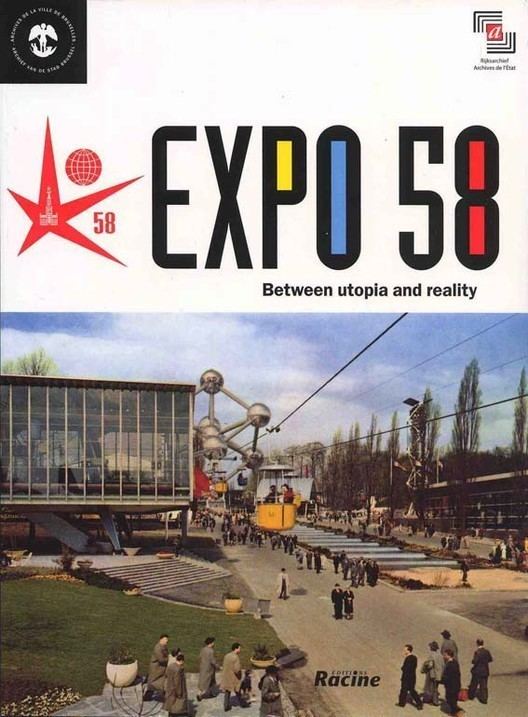 | ||
Category First category General Exposition Area 2 square kilometres (490 acres) | ||
Expo 58 brussels world s fair 1958 home movies
Expo 58, also known as the Brussels World’s Fair (Dutch: Brusselse Wereldtentoonstelling, French: Exposition Universelle et Internationale de Bruxelles), was held from 17 April to 19 October 1958. It was the first major World's Fair after World War II.
Contents
- Expo 58 brussels world s fair 1958 home movies
- eskoslovensk pavilon expo 58
- Background
- Exhibition
- Austria
- Czechoslovakia
- Mexico
- Paris
- United Kingdom
- USA
- The USSR
- The Federal Republic of Germany
- Yugoslavia
- Transport
- Mozarts Requiem incident
- International film poll
- References

eskoslovensk pavilon expo 58
Background
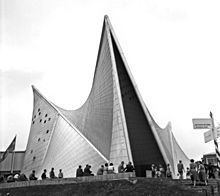
Nearly 15,000 workers spent three years building the 2 km2 (490 acres) site on the Heysel plateau, 7 kilometres (4.3 mi) northwest of central Brussels, Belgium. Many of the buildings were re-used from the Brussels International Exposition of 1935, which had been held on the same site.

Every 25 years starting in 1855, Belgium had staged large national events to celebrate its national independence following the Belgian Revolution of 1830. However, the Belgian government under prime minister Achille Van Acker decided to forego celebrations in 1955 to have additional funding for the 1958 Expo.
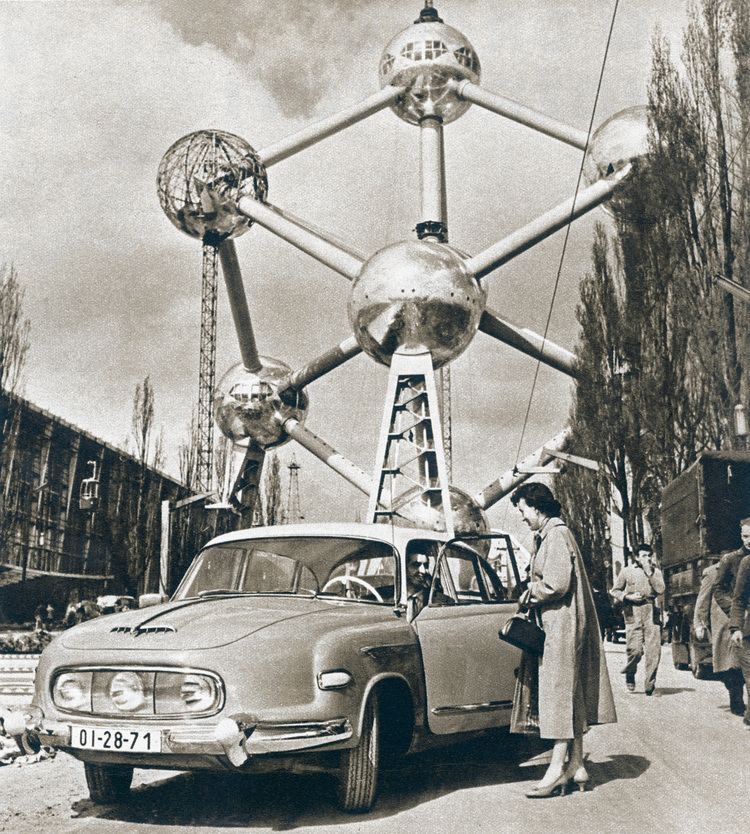
Expo 58 was the 11th World's Fair hosted by Belgium, and the fifth in Brussels, following the fairs in 1888, 1897, 1910 and 1935. Since Expo 58, Belgium has not arranged any more world fairs.
Exhibition
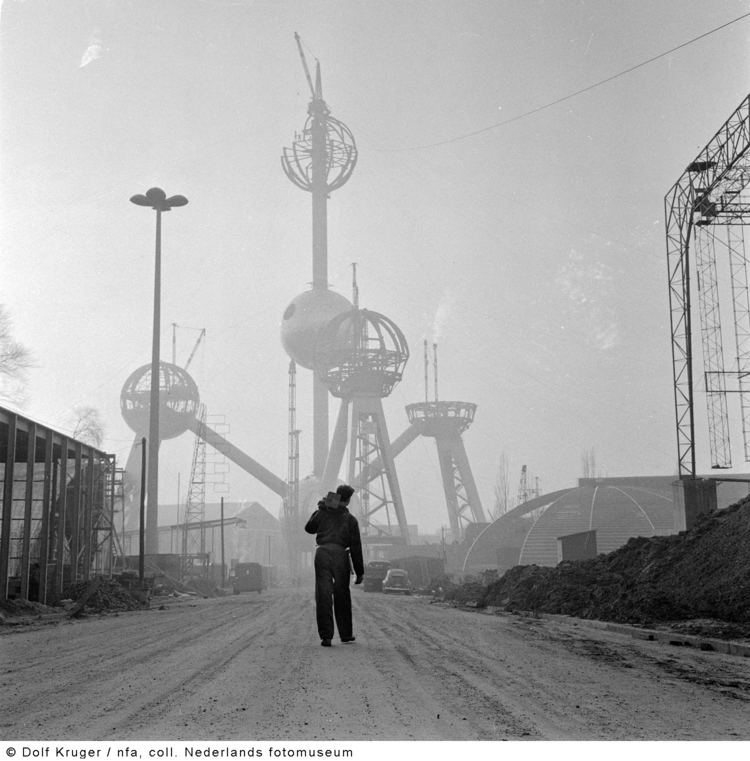
The site is best known for the Atomium, a giant model of a unit cell of an iron crystal (each sphere representing an atom). More than 41 million visitors visited the site, which was opened with a call for world peace and social and economic progress, issued by King Baudouin I.
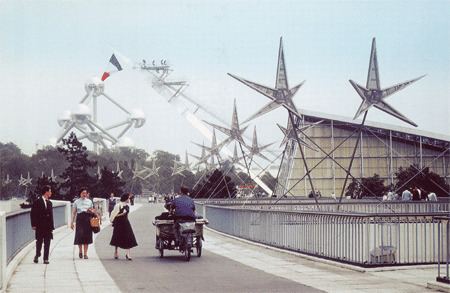
Notable exhibitions include the Philips Pavilion, where "Poème électronique", commissioned specifically for the location, was played back from 425 loudspeakers, placed at specific points as designed by Iannis Xenakis, and Le Corbusier.
Another exhibition at the Belgian pavilion was the Congolese village that some have branded a human zoo.
Austria

The Austrian pavilion was designed by Karl Schwanzer in modernist style. It was later transferred to Vienna to host the museum of the 20th century. In 2011 it was reopened under the new name 21er Haus. It included a model Austrian Kindergarten, which doubled as a day care facility for the employees, the Vienna Philharmonic playing behind glass, and a model nuclear fusion reactor that fired every 5 minutes.
Czechoslovakia
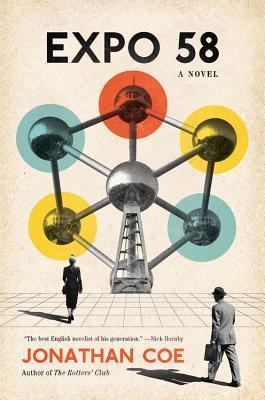
The exposition "One Day in Czechoslovakia" was designed by Jindřich Santar who cooperated with artists Jiří Trnka, Antonín Kybal, Stanislav Libenský and Jan Kotík. Architects of the simple, but modern and graceful construction were František Cubr, Josef Hrubý and Zdeněk Pokorný. The team's artistic freedom, so rare in the hard-line communist regime of the 1950s, was ensured by the government committee for exhibitions chairman František Kahuda. He supported the famous Laterna Magika show, as well as Josef Svoboda's technically unique Polyekran. The Czechoslovak pavilion was visited by 6 million people and was officially awarded the best pavilion of the Expo 58.
Mexico
This was designed by the architect Pedro Ramírez Vázquez. It was awarded the exposition's star of gold.
Paris
The city of Paris had its own pavilion, separate from the French one.
United Kingdom
This was produced by the designer James Gardner, architect Howard Lobb & engineer Felix Samuely. The on-site British architect was Michael Blower, Brussels born and bilingual.
USA
The US pavilion was quite spacious and included a fashion show with models walking down a large spiral staircase, an electronic computer that demonstrated a knowledge of history, and a color television studio behind glass. It was designed by noted architect Edward Durell Stone.
The USSR
The Soviet pavilion was a large impressive building which they folded up and took back to Russia when Expo 58 ended. They had a facsimile of Sputnik which mysteriously disappeared, and they accused the US of stealing it. They had a bookstore selling science and technology books in English and other languages published by the Moscow Press. On the exposition there was also a model of Lenin first nuclear icebreaker, and cars: GAZ-21 Volga, GAZ-13 Chaika, ZIL-111, Moskvitch 407 and 423, trucks GAZ-53 and MAZ-525. The Soviet exposition was awarded with a Grand Prix.
The Federal Republic of Germany
The West German pavillon was built by the architects Egon Eiermann and Sep Ruf. The world press called it the most beautiful pavillon of the exhibition.
Yugoslavia
The pavilion of Yugoslavia was designed by the architect Vjenceslav Richter, who originally proposed to suspend the whole structure from a giant cable-stayed mast. When that proved too difficult, Richter devised a tension column consisting of six steel arches supported by a pre-stressed cable, which stood in front of the pavilion as a visual marker and symbolized Yugoslavia's six constituent republics. Filled with modernist art, the pavilion was praised for its elegance and simplicity and was awarded a Gold Medal. After the end of Expo 58, it was sold and reconstructed as a high school in the Belgian municipality of Wevelgem, where it still stands.
Transport
Mozart's Requiem incident
The autograph of Mozart's Requiem was placed on display. At some point, someone was able to gain access to the manuscript, tearing off the bottom right-hand corner of the second to last page (folio 99r/45r), containing the words "Quam olim d: C:". As of 2012 the perpetrator has not been identified and the fragment has not been recovered.
If the most common authorship theory is true, then "Quam olim d: C:" might very well be the last words Mozart wrote before he died. It is probable that whoever stole the fragment believed that to be the case.
International film poll
The event offered the occasion for the organization by thousands of critics and filmmakers from all over the world, of the first universal film poll in history.
